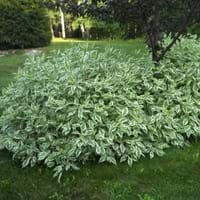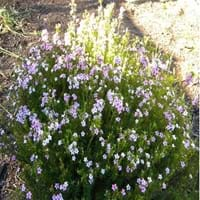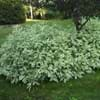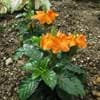Life Span
Perennial
Annual and Perennial
Origin
North America, Northeastern United States
South Africa
Types
Not Available
Not Available
Habitat
along watercourse, gardens, Humid climates, Prairies, Roadsides
gardens, Woodland Garden
USDA Hardiness Zone
3-8
8-11
Sunset Zone
A1, A2, A3, 1a, 1b, 2a, 2b, 3a, 3b, 4, 5, 6, 7, 8, 9, 14, 15, 16, 17, 18, 19, 20, 21
H1, H2, 8, 9, 14, 15, 16, 17, 18, 19, 20, 21, 22, 23, 24
Habit
Thicket/Colonizing
Spreading
Flower Color
White
Red, Pink
Flower Color Modifier
Not Available
Not Available
Fruit Color
Not Available
Not Available
Leaf Color in Spring
White, Dark Green
Green
Leaf Color in Summer
White, Dark Green
Green
Leaf Color in Fall
Red, Burgundy
Green
Leaf Color in Winter
Not Available
Green
Leaf Shape
Ovate
Grass like
Plant Season
Spring, Summer, Fall, Winter
Spring, Summer, Fall, Winter
Sunlight
Full Sun, Partial Sun, Partial shade
Full Sun, Partial Sun
Type of Soil
Clay, Loam, Sand
Loam, Sand
The pH of Soil
Acidic, Neutral, Alkaline
Acidic, Neutral
Soil Drainage
Average
Well drained
Bloom Time
Late Spring, Early Summer
Late Spring, Early Summer, Fall
Tolerances
Wet Site, Pollution
Drought
Where to Plant?
Ground, Pot
Ground, Pot
How to Plant?
Divison, Seedlings, Stem Planting
Semi-hardwood cuttings, Softwood cuttings, Stem Cutting
Plant Maintenance
Medium
Medium
Watering Requirements
Allow soil to be completely dry in between waterings, Keep ground moist, Prefer drip-irrigation instead of Over-head watering, Water more in summer
Average Water Needs, Do Not over Water, Requires regular watering
In Summer
Lots of watering
Lots of watering
In Spring
Moderate
Moderate
In Winter
Average Water
Average Water
Soil pH
Acidic, Neutral, Alkaline
Acidic, Neutral
Soil Type
Clay, Loam, Sand
Loam, Sand
Soil Drainage Capacity
Average
Well drained
Sun Exposure
Full Sun, Partial Sun, Partial shade
Full Sun, Partial Sun
Pruning
Do not prune during shooting season, Prune if you want to improve plant shape, Remove dead branches, Remove dead leaves, Remove deadheads, Shape and thin as needed
Prune in spring, Prune in summer, Remove damaged leaves, Remove dead branches, Remove dead leaves, Remove dead or diseased plant parts
Fertilizers
All-Purpose Liquid Fertilizer
All-Purpose Liquid Fertilizer, Nitrogen, Phosphorous
Pests and Diseases
Pests and diseases free, Red blotch
Red blotch
Plant Tolerance
Drought
Drought
Flower Petal Number
Single
Single
Foliage Texture
Medium
Fine
Foliage Sheen
Matte
Matte
Attracts
Birds
Butterflies
Allergy
no allergic reactions
Pollen
Aesthetic Uses
Showy Purposes
Showy Purposes
Beauty Benefits
Not Available
Not Available
Edible Uses
Yes
Insignificant
Environmental Uses
Air purification
Air purification
Medicinal Uses
Back pain
Not Available
Part of Plant Used
Not Available
Flowers
Other Uses
Not Available
Used as Ornamental plant
Used As Indoor Plant
No
No
Used As Outdoor Plant
Yes
Yes
Garden Design
Feature Plant, Foundation, Hedges, Mixed Border, Screening, Wind Break
Feature Plant, Foundation, Mixed Border, Tropical
Botanical Name
CORNUS sericea 'Variegata'
COLEONEMA pulchrum
Common Name
Variegated Dogwood
Breath of Heaven
In Hindi
Variegated Dogwood
Breath of Heaven Plant
In German
Verändertes Hartriegel
Atem des Himmels Pflanze
In French
panaché Dogwood
Breath of Heaven Plante
In Spanish
abigarrado Cornejo
Aliento del Cielo Planta
In Greek
Κυμαίνεται Dogwood
Ανάσα του Ουρανού Φυτών
In Portuguese
variegada Dogwood
Respiração do Céu Planta
In Polish
Kolorowy Dereń
Breath of Heaven Zakładu
In Latin
Dogwood variegated
Gaudete de caelo Planta
Phylum
Not Available
Tracheophyta
Class
Not Available
Magnoliopsida
Order
Cornales
Sapindales
Family
Cornaceae
Rutaceae
Clade
Angiosperms, Asterids, Eudicots
Not Available
Tribe
Not Available
Not Available
Subfamily
Not Available
Magnolioideae
Number of Species
Not Available
Not Available
Season and Care of Variegated Dogwood and Breath-of-Heaven
Season and care of Variegated Dogwood and Breath-of-Heaven is important to know. While considering everything about Variegated Dogwood and Breath-of-Heaven Care, growing season is an essential factor. Variegated Dogwood season is Spring, Summer, Fall and Winter and Breath-of-Heaven season is Spring, Summer, Fall and Winter. The type of soil for Variegated Dogwood is Clay, Loam, Sand and for Breath-of-Heaven is Loam, Sand while the PH of soil for Variegated Dogwood is Acidic, Neutral, Alkaline and for Breath-of-Heaven is Acidic, Neutral.
Variegated Dogwood and Breath-of-Heaven Physical Information
Variegated Dogwood and Breath-of-Heaven physical information is very important for comparison. Variegated Dogwood height is 150.00 cm and width 180.00 cm whereas Breath-of-Heaven height is 304.80 cm and width 152.40 cm. The color specification of Variegated Dogwood and Breath-of-Heaven are as follows:
Variegated Dogwood flower color: White
Variegated Dogwood leaf color: White and Dark Green
Breath-of-Heaven flower color: Red and Pink
- Breath-of-Heaven leaf color: Green
Care of Variegated Dogwood and Breath-of-Heaven
Care of Variegated Dogwood and Breath-of-Heaven include pruning, fertilizers, watering etc. Variegated Dogwood pruning is done Do not prune during shooting season, Prune if you want to improve plant shape, Remove dead branches, Remove dead leaves, Remove deadheads and Shape and thin as needed and Breath-of-Heaven pruning is done Prune in spring, Prune in summer, Remove damaged leaves, Remove dead branches, Remove dead leaves and Remove dead or diseased plant parts. In summer Variegated Dogwood needs Lots of watering and in winter, it needs Average Water. Whereas, in summer Breath-of-Heaven needs Lots of watering and in winter, it needs Average Water.





